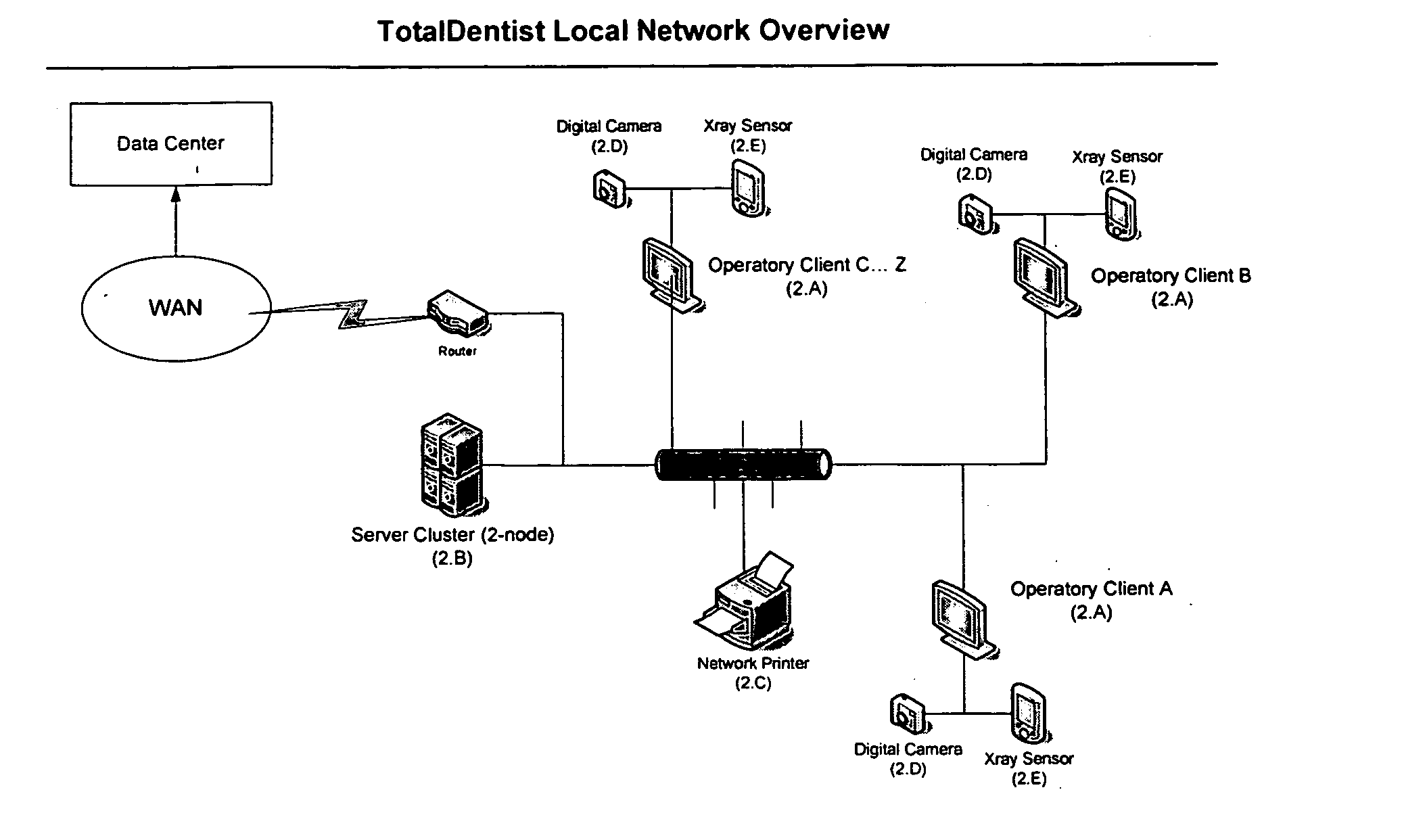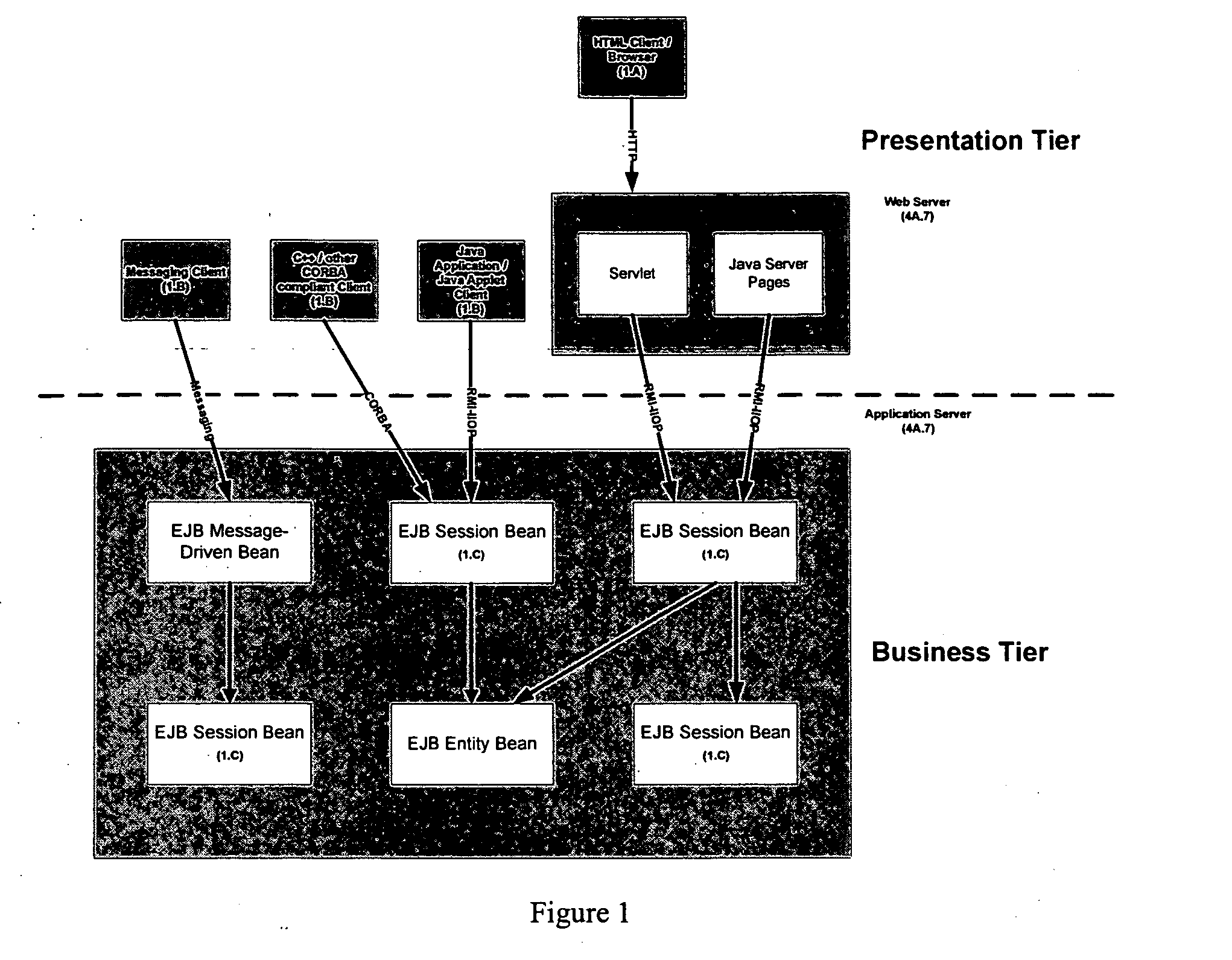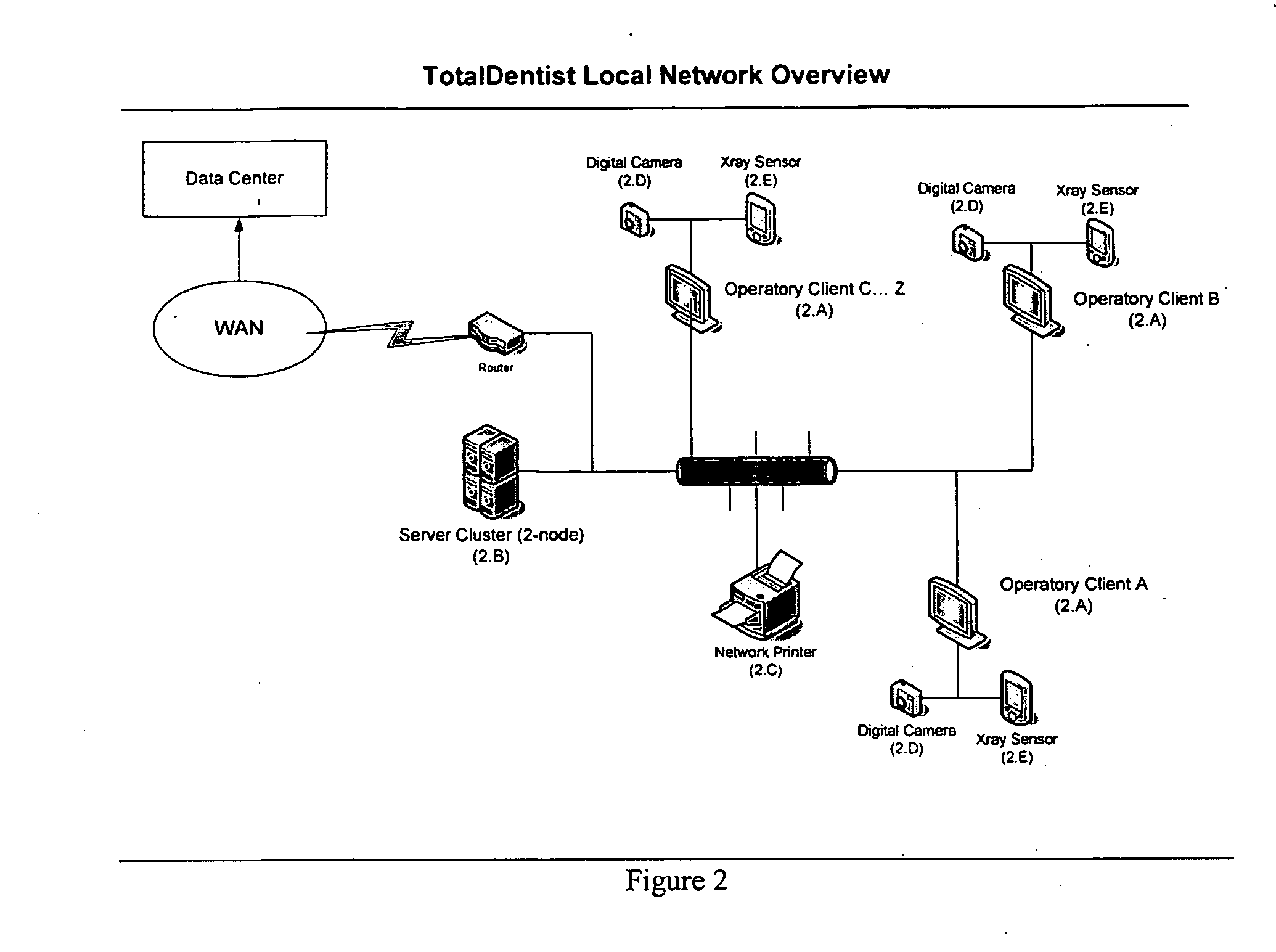Totaldentist
a dental office and totaldentist technology, applied in the field of dental practice computer system management, can solve the problems of inability to integrate with other dental office technologies, inability to scale, system specific, difficult to manage, etc., and become increasingly incompatible with existing and older hardwar
- Summary
- Abstract
- Description
- Claims
- Application Information
AI Technical Summary
Benefits of technology
Problems solved by technology
Method used
Image
Examples
Embodiment Construction
[0068] Hardware and Software
[0069] The present system is broken into three different components: (1) application server (2A); (2) workstation client (2B); and (3) USB peripherals (2C).
[0070] The application server (FIG. 3) is comprised of two units (3A.1, 3A.2) joined together physically by: a network crossover cable (3A), null-modem cable (3B), and a KVM switch (3C) (for sharing one monitor, keyboard, and mouse) as shown in FIG. 3. Each unit (3A.1, 3A.2) houses two 80 GB hard drives (3D.1, 3D.2) in RAID (Redundant Array of Inexpensive Disks) Level 1 (mirrored, duplicate copy) for real time physical backup of the application and all related data. The application server also includes a high-availability layer (3E) that checks to see if each of the two units are “alive”; if one shuts down, the application services related to said system are activated on the second unit—resulting in almost zero downtime. This service switchover is seamless and undetected by the user. The application ...
PUM
 Login to View More
Login to View More Abstract
Description
Claims
Application Information
 Login to View More
Login to View More - R&D
- Intellectual Property
- Life Sciences
- Materials
- Tech Scout
- Unparalleled Data Quality
- Higher Quality Content
- 60% Fewer Hallucinations
Browse by: Latest US Patents, China's latest patents, Technical Efficacy Thesaurus, Application Domain, Technology Topic, Popular Technical Reports.
© 2025 PatSnap. All rights reserved.Legal|Privacy policy|Modern Slavery Act Transparency Statement|Sitemap|About US| Contact US: help@patsnap.com



